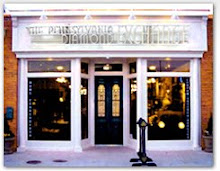Frequently Asked Questions
You know the old saying "The only dumb question is the one not asked." We here at Penn Diamond Exchange couldn't agree with that more. That's why our phone center is always open and emails will be answered same day. However, we have noticed that some questions get asked much more then others. So, lets take a look at them now or you can visit our FAQ page. Also, as always I invite you to comment and give your opinion on any of the questions discussed.
Which is more secure: Friction or Screwback Earring Posts?
Well for starters both are very secure and can be used for any size diamond. Our standard setting is a 4 prong white gold basket setting with screwbacks, and if not specified that is the mounting you will receive. Even though screwback is the standard post many people chose friction backs because they feel they are more comfortable. Mostly people who have small piercings chose the friction backs.
Is the 2 prong diamond tennis bracelet as secure as the 4 prong?
Yes, yes and definitely yes. Even though the 2 prong has half the amount of prongs the diamonds are still very secure. If it wasn't secure we wouldn't sell it. The main difference between the two styles is their look. The four prong is the more traditional style and it's been around longer but the two prong is gaining in popularity.
Why do you (and most jewelers) use 14k gold instead of 18k?
We at Penn Diamond Exchange use 14k gold. After years of making jewelry we’ve learned that for overall strength and endurance it can’t be surpassed. Not to say we wouldn’t use 18k upon request. However, it's a softer gold it doesn’t hold up as well after prolonged use. Also 18k gold also has a lighter more yellow color to it. White gold and yellow gold are the same material, but white gold has been treated and eventually polished with rhodium, the same substance that is used to polish platinum. This is what gives the white gold its brilliant shine and glow.
All that being said all items are available in 14k, 18k, and platinum. With proper cleaning and care any metal will look fantastic for years to come.





